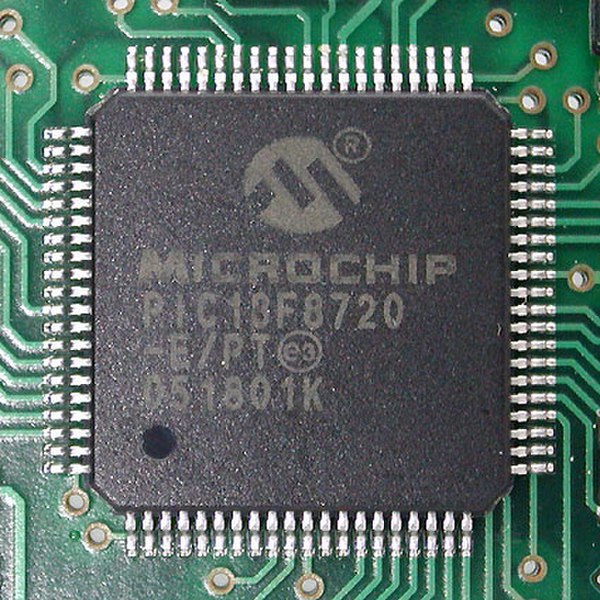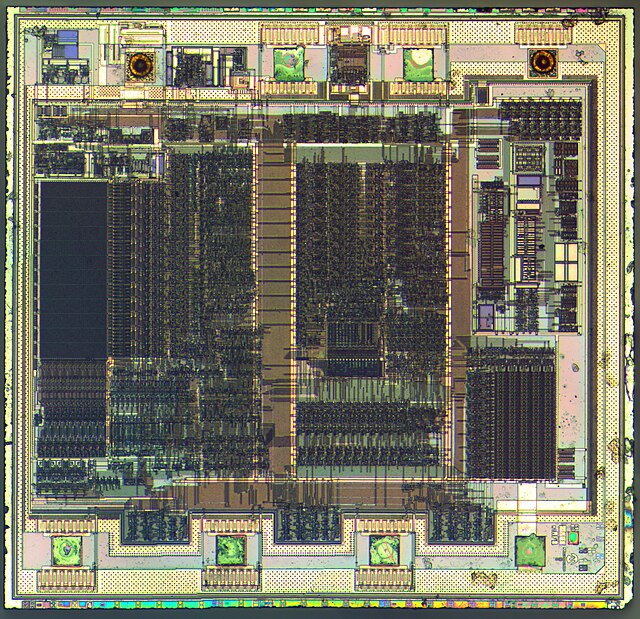The 68HC11 is an 8-bit microcontroller family introduced by Motorola Semiconductor in 1984. It descended from the Motorola 6800 microprocessor by way of the 6801. The 68HC11 devices are more powerful and more expensive than the 68HC08 microcontrollers and are used in automotive applications, barcode readers, hotel card key writers, amateur robotics, and various other embedded systems. The MC68HC11A8 was the first microcontroller to include CMOS EEPROM.
Motorola MC68HC11 in a 48-pin dual in-line package (DIP)
68HC11 block diagram
52-pin plastic leaded chip carrier (PLCC)
A microcontroller or microcontroller unit (MCU) is a small computer on a single integrated circuit. A microcontroller contains one or more CPUs along with memory and programmable input/output peripherals. Program memory in the form of NOR flash, OTP ROM or ferroelectric RAM is also often included on chip, as well as a small amount of RAM. Microcontrollers are designed for embedded applications, in contrast to the microprocessors used in personal computers or other general purpose applications consisting of various discrete chips.
The die from an Intel 8742, an 8-bit microcontroller that includes a CPU running at 12 MHz, 128 bytes of RAM, 2048 bytes of EPROM, and I/O in the same chip
Two ATmega microcontrollers
A PIC 18F8720 microcontroller in an 80-pin TQFP package
Die of a PIC12C508 8-bit, fully static, EEPROM/EPROM/ROM-based CMOS microcontroller manufactured by Microchip Technology using a 1200 nanometer process







